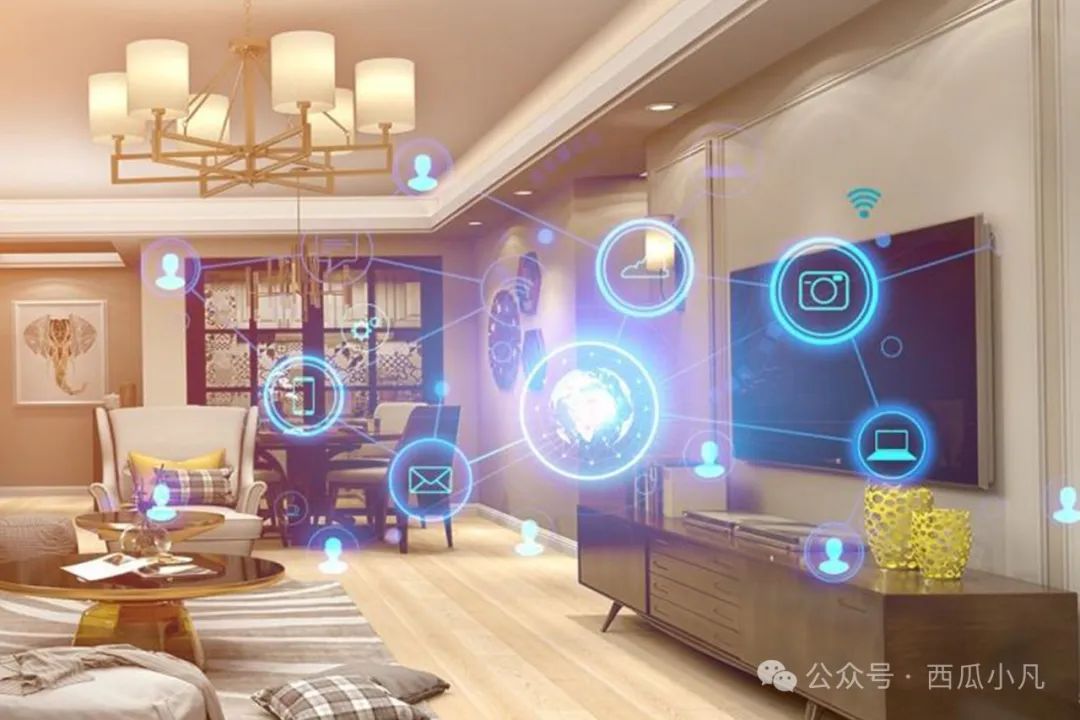As air conditioning, lighting, and security devices from different brands begin to understand the same set of commands, the smart home industry is undergoing a silent revolution.
The latest “Digital Home Construction Guidelines” released by the Ministry of Housing and Urban-Rural Development clearly require that by 2025, all smart devices in a home must be interconnected. This document has completely shattered the industry’s closed ecosystem approach—compatibility is becoming the new technological high ground.
What truly determines user experience is no longer the performance of individual products, but the “translator” that enables smooth communication between devices from different brands.In this issue, we comprehensively review the smart home industry chain and identify companies with unique advantages in protocol compatibility, system integration, and core components for your research and reference.
Special Statement: The following content does not constitute any investment advice, guidance, or commitment, and is for academic discussion only.

Company One: Zhenbang Intelligent
Main Business:Smart controllers and system solutions
Conceptual Relevance:Supplier of the “central nervous system” for smart homes
Growth Potential:As one of the few domestic companies mastering cross-platform protocol conversion technology, its multimodal interactive control system has been integrated with mainstream ecosystems such as Huawei HarmonyOS and Xiaomi Vela. In 2024, revenue growth is expected to reach 14.37%, with a market share exceeding 18% in the smart home control module segment. Unlike traditional controller manufacturers’ hardware thinking, the company’s innovative “protocol translation layer” technology allows for seamless interconnectivity between devices from different brands.
Company Two: Seagull Housing
Main Business:Integrated bathroom and smart kitchen systems
Conceptual Relevance:Pioneer in smart bathroom spaces
Growth Potential:The innovative smart central control system for bathroom spaces can link multiple devices such as water temperature, lighting, and music. The heat pump technology developed in collaboration with Zhuhai Shengou improves energy efficiency by 40%. With a market share exceeding 25% in the prefabricated bathroom sector, its modular design concept is extending from bathrooms to whole-home intelligence.
Company Three: Huali Co., Ltd.
Main Business:Custom furniture and smart panels
Conceptual Relevance:Innovator of invisible smart carriers
Growth Potential:By embedding smart sensing modules into furniture panels, ordinary wardrobes and cabinets are transformed into environmental sensing terminals. The self-developed flexible circuit printing technology has reduced the cost of smart components by 60%. In 2024, the shipment of smart panels is expected to grow by 217% year-on-year, expanding into B-end scenarios such as hotels and long-term rental apartments.
Company Four: Sunrise Eastern
Main Business:Solar thermal and air energy equipment
Conceptual Relevance:Energy management solution integrator
Growth Potential:Its smart energy management platform can link photovoltaic, energy storage, and heat pump devices, increasing the household electricity self-sufficiency rate to 70%. It ranks among the top three in the distributed energy system market, with over 120,000 new smart home users added in 2024, and is building an energy-home interaction ecosystem.
Company Five: Craft Home
Main Business:Smart electric sofas and health furniture
Conceptual Relevance:Innovator of scenario-based interaction
Growth Potential:The world’s first body-sensing interactive sofa can automatically adjust lighting, air conditioning, and other devices based on seating posture changes. The combination of medical-grade sensors and big data algorithms makes its products a gateway to health management. With a market share exceeding 30% in North America, every 1% increase in domestic smart sofa penetration could bring an additional 500 million yuan in revenue.
👇 Relevant company information has been organized, click below to receive it 👇

Internal Data Code.pdfReceive
Risk Warning: This article is based on publicly available historical data from the internet. If there are any errors, please refer to the latest data. This article does not constitute any investment advice, guidance, or commitment, and is for academic discussion only. Please read carefully. The market has risks, and investment decisions should be based on rational independent thinking.